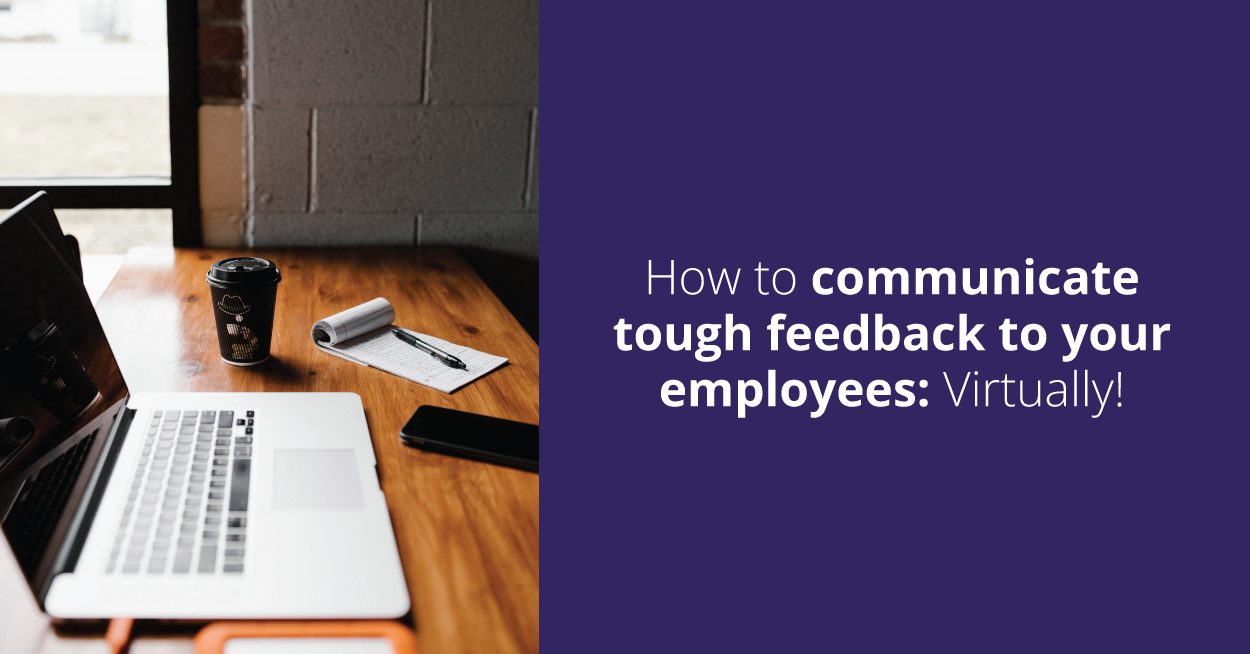
According to a survey by Zenger and Folkman, 92% of employees agreed that negative feedback, if delivered assertively, is effective at improving performance.
Something as trivial as “I need you to sort things soon!” might be heard as “I don’t think you are fit for this role” if not communicated properly.
Most employees cannot just ‘brush through’ a criticism, but they’d if it were praise. This bias is a universal tendency towards a negative approach that shapes how most employees hear feedback. In the remote working environment with limited non-verbal cues, the challenge has only become greater.
Here are a few tips on communicating tough feedback to your employees virtually:
1.Start by ASKING, not TELLING
More often than not, employees are aware of an underperforming phase. So when they voice it, it’s easier to take the conversation from there. Listen attentively when they raise their concerns. It could be anything from a miscommunication spell to a ‘first-time’ job role jitters, make sure they’re heard before you start speaking.
But what if your employee isn’t aware of their bad performance? Show concern instead of a complaint. Don’t make a statement out of how disappointed you feel at the moment, rather ask questions. Instead of “I can tell because I expected so much”, try saying – “I ask because I noticed some gaps.”
2. Offer it early but not vaguely
According to OfficeVibe, about 43% of highly engaged employees receive feedback at least once a week as opposed to 18% of low-engaged employees.
Your employee works upon your feedback, don’t wait until the situation blows up. Send an email or set up a quick call depending on the problem at hand. The chances are, your employee might not know the mistakes they’ve been making. And hence, the more you keep your feedback for later, the worse your employee will feel when they receive it.
A study by Harvard Business Review suggests that individuals are more receptive to constructive criticism when it’s specific. You cannot ‘hand-wave’ or ‘beat around the bush’ and call it feedback. Instead, pick a specific area of concern and provide facts without assuming any intent.
3.Remember, it’s not what you say but how you say it
Sandwiching the negative feedback between two positive ones, also, known as the sandwich technique, is arguably an ineffective one. It leaves your employees confused about the importance & urgency of improvement areas.
A more acceptable method needs to be used for delivering feedback. One of them is the McKinsey Feedback Model. Why does it work better? The model is specific, fact-based, less personal, irrefutable, and actionable. It also diffuses any argument by focusing only on facts through:
- Pointing out the specific actions that needs to be changed/worked upon
- Talking about how that makes you feel
- Providing suggestions to improve/ take a different approach
- Refraining from getting personal at any level
4.Don’t stop at the ‘feedback’ discussion
Remember, when someone joins you, they might have foregone multiple offers before joining. Their career is your responsibility. Most employees want to do their best to grow their career unless they are a wrong hire.
So it’s important to fill the gaps together and go a step further by-
- Showing that you care for their growth as much as the company. Probe into small talks, listen, and share a little about yourself too.
- Providing clarity in expectations and creating a plan of action. According to a report by Clear Company, “Only about 50% of the workforce strongly feels as though they understand work expectations.” As an employer, you need to make sure it doesn’t happen to your organisation.
- Offering a direction that resolves possible conflicting priorities by reviewing their understanding of the same.
- Clarifying why you said what you said. Steer clear of any negative spins to your statement that your employee can entertain. If needed, you might as well explicitly say “What I am saying is this and not this” or “I don’t mean this but this” to avoid any signs of misinterpretation.
The ongoing stress and uncertainty brought by the pandemic have also added up to the negativity bias, thus, making your employees feel even more threatened. While we hope that the points mentioned above help you deal with it through empathy and clear communication, we also hope you don’t beat yourself up trying to perfect it.